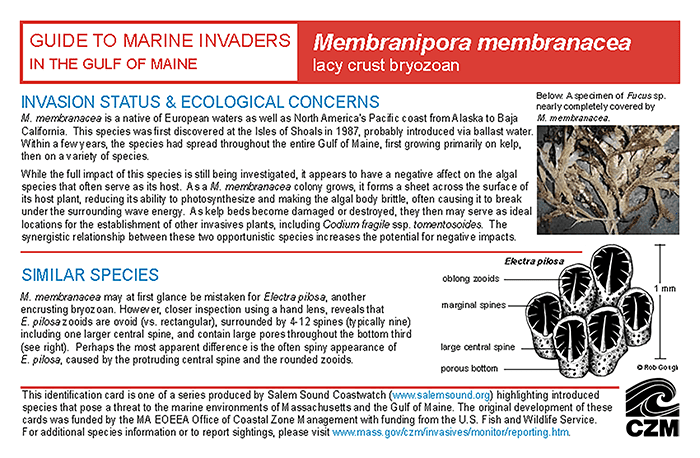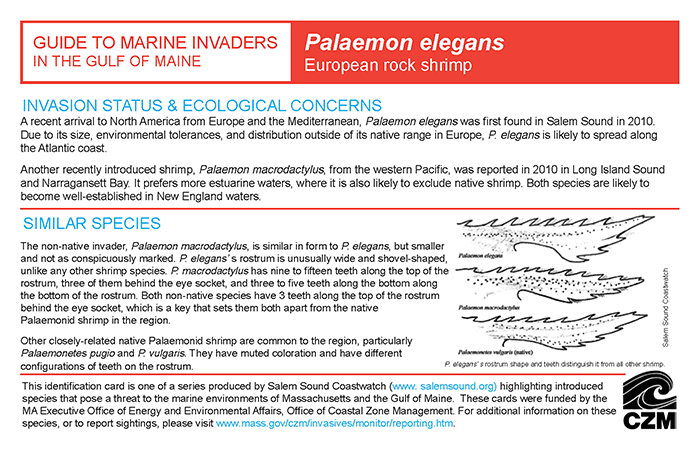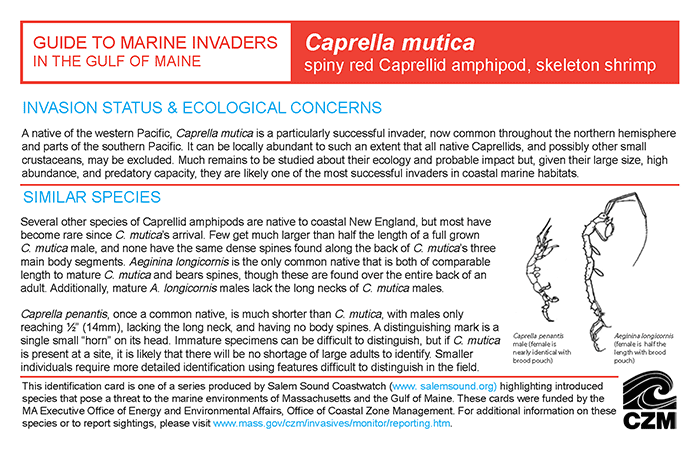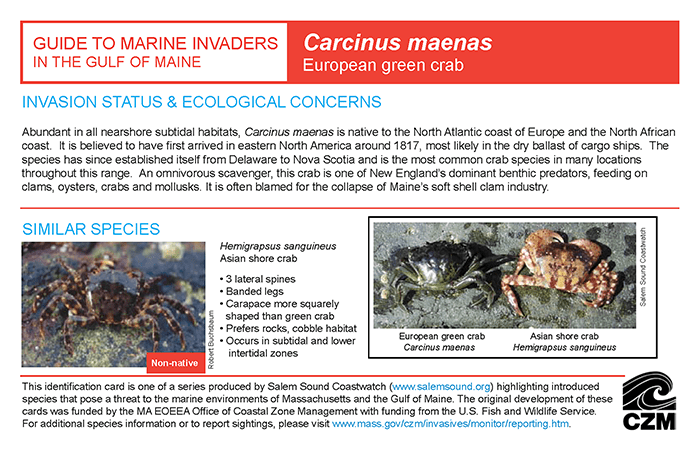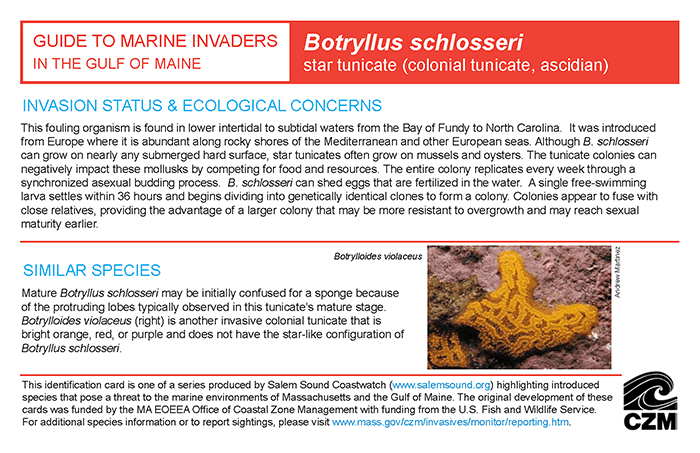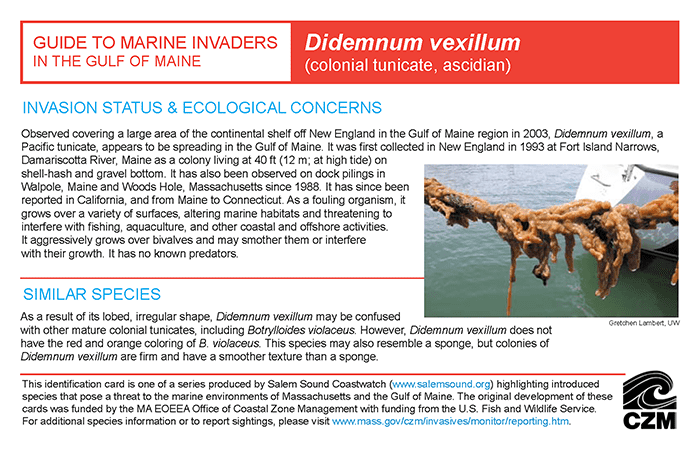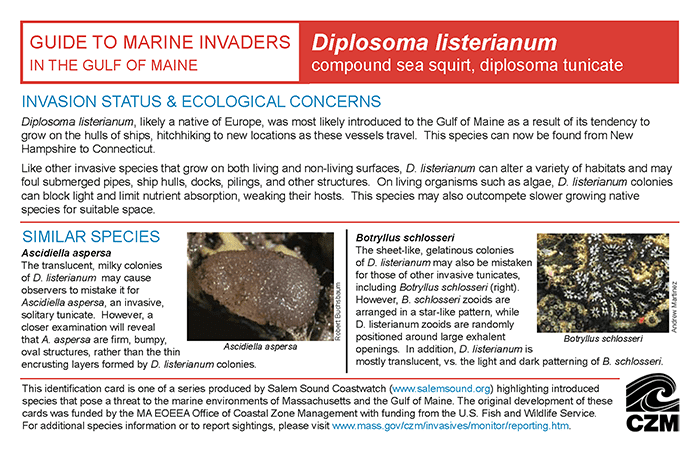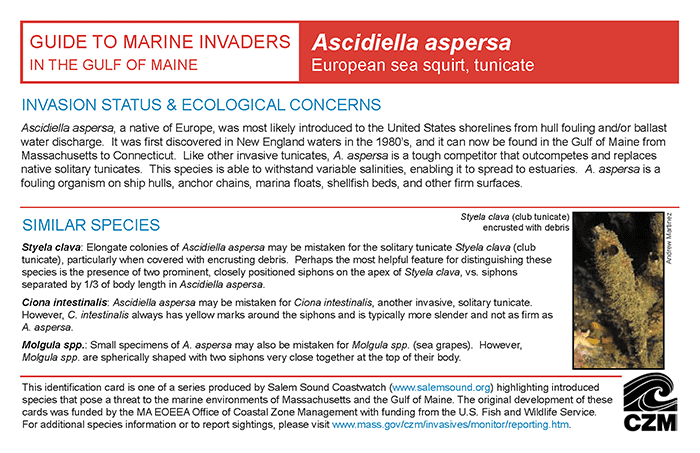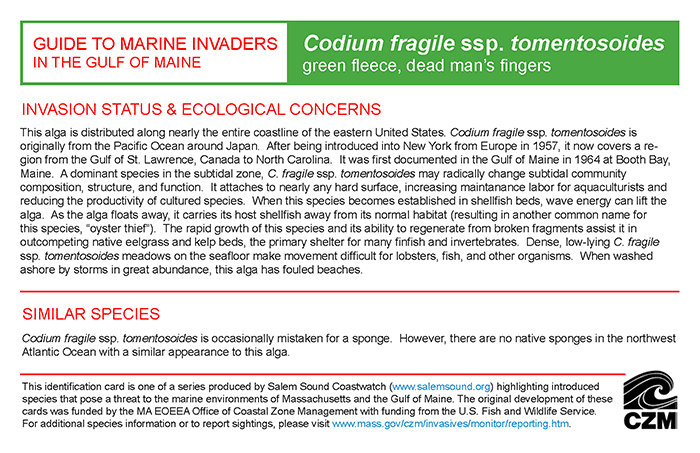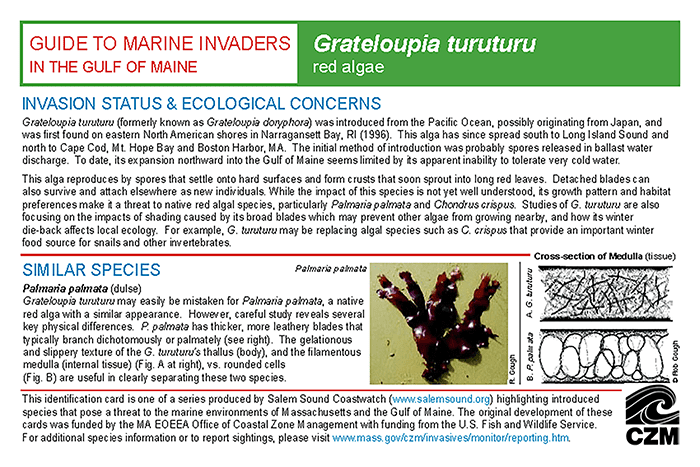Marine Invasives
Marine Invasives and Their Impact
Biological invasions have emerged as one of the leading environmental threats to our coastal and marine habitats. Marine invasives are species that have been moved beyond their natural geographic range, either deliberately or unintentionally, by human activities. These introduced species often reproduce in large numbers and outcompete native species for food and space. With no natural controls to keep their numbers in check, these invaders can have damaging effects on our local waters.
Salem Sound's Marine Invaders
More than 60 marine invaders have been documented in New England waters. Scroll through their “mugshots” to get to know the common marine invasive species in Salem Sound. Click on their photo to access an ID card to learn how to identify them, their origins, and their impact on the marine environment.
Marine Invasives Species Monitoring
Invasive species are considered second only to human development in causing declines in the total number of species in the U.S. and worldwide, and millions of dollars are spent in control efforts. Therefore, Salem Sound Coastwatch monitors marine species at docks, in tidepools, and along the rocky shore every summer with the help of community science volunteers. We are a founding member of the Marine Invader Monitoring and Information Collaborative (MIMIC) and share our data with MA Coastal Zone Management, along with other groups in ME, NH, MA, and RI.
Salem Sound Coastwatch has documented new species moving into Salem Sound with the help of our volunteers.
Palaemon elegans (European rock shrimp) were first found in 2010 at a dock in Salem and at the same time were collected during salt marsh monitoring at Salem’s Forest River marsh and Gloucester’s Good Harbor marsh. This was the first sighting of this shrimp in North America. They are easily distinguished by their blue claws.
Several algae have moved into Salem Sound recently. Colpomenia peregrina (Bladder Weed), a bubble-shaped, hollow seaweed that floats on the water’s surface, moved south into our region in 2013. Grateloupia turuturu (Red Algae), a red, slimy seaweed, moved north into Salem Sound in 2018 and has increased in abundance since then.

We train volunteers to be the eyes on the water. Let us know if you want to participate in our summer dock and intertidal rocky shore monitoring. Help us collect information about the location, abundance, and characteristics of non-native and native species along our shore.
SETL Project
In 2007, we joined the SETL Project, an international effort to detect and quantify fouling marine organisms, by placing settlement plates at the Beverly Harbor Pier. Every three months, the plates are pulled and examined for fouling organisms that have colonized the plates, then scraped and returned to the water. We thank Cell Signaling Technology for providing funds to purchase the materials for the initial deployment.





















